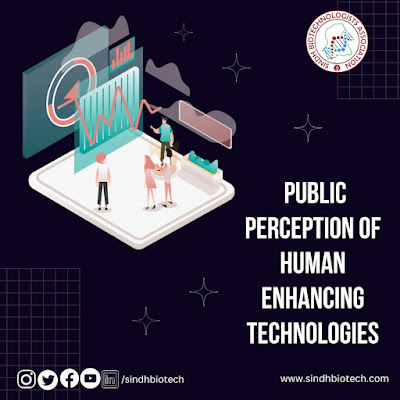Genetic Engineering
INTRODUCTION
It is defined as the technique used for the direct manipulation of an organism’s DNA to produce
variations in characteristics (phenotypes) in a specific way to get the desired traits in the organisms.
It has been extensively used for the manipulation of the genetic makeup of organisms. Sometimes it
is also called as genetic modification and its purpose is to target the genome for alteration.
In order to alter the genome, it might change the already present sequence of base pairs or it might
add an extra-base or might completely delete an already existing base pair or even a complete part
of DNA. It can also be used to form organisms that have DNA from another organism called
transgenic organisms. This technique can be applied to a wide range of organisms ranging from
a tiny virus to a fully developed sheep.
GENERAL PROCEDURE
For insulin production through genetic engineering following procedure is followed:
- First, we isolate a small extrachromosomal circular part called plasmid from any bacteria or yeast cells that acts as a vector.
- Then using restriction enzymes that act as molecular scissors we cut out a small apart from this circular plasmid.
- As a gap is formed in the plasmid so we have a site for gene insertion for the production of insulin, we add the insulin production gene in the gap of plasmid and this plasmid has been modified.
- Now this modified plasmid is introduced to either the same bacterial or yeast cells or to a new one.
- The host cell containing the modified plasmid when completes each cycle of division it also produces the insulin as a by-product as well due to the introduced gene.
TYPES OF GENETIC ENGINEERING
There are three main types of genetic engineering.
- Analytical Genetic Engineering
- Applied Genetic Engineering
- Chemical Genetic Engineering
- ANALYTICAL GENETIC ENGINEERING
This branch deals with the research domain of genetic engineering where we develop different
virtual genetic models with the help of different computer software. It helps to theoretically study
the outcomes of various activities which are otherwise harmful to be carried out on any other
organism or the ones in which results are unpredictable. So, it is an efficient way to pass the hit and trial stage without any disaster causing results.
- APPLIED GENETIC ENGINEERING
Well as the name shows this field covers the practical application of all the tools for the
development of cloned or transgenic organisms in real. As we know cloning is still a controversial
subject worldwide but transgenic organisms such as fruits and the drought-resistant crop has been
developed through manipulation of their genome.
- CHEMICAL GENETIC ENGINEERING
This technique can be considered as the root level of applied genetic engineering because this field
deals with the isolation, classification and graphing of various genes in order to prepare them to
be used in applied engineering. It involves the use of techniques such as genetic mapping and
genetic coding.
METHODS USED IN GENETIC ENGINEERING
There are three main methods used in genetic engineering:
- Plasmid method
- Vector method
- Biolistic method
- PLASMID METHOD
This is the most commonly used method in genetic engineering. A small circular DNA is known as
Plasmid, that is used in this method for genetic engineering. It is mostly used for microorganisms e.g.
bacteria.
- VECTOR METHOD
This method uses vectors which are the small carrier molecules, normally viruses. Viruses attach
to a host cell and insert their DNA or RNA into host genomes where replication occurs. So, any
gene inserted in a vector can be a part of the host genome.
- BIOLISTIC METHOD
The biolistic method is also known as gene gun method which uses a gun to introduce a gene or DNA
to a cell. This method is mainly used for genetic engineering of plants
APPLICATIONS OF GENETIC ENGINEERING
Genetic engineering has many applications in the field of:
- MEDICINE
- Manufacturing of drugs
- Gene therapy
- Production of growth hormones
- Creation of monoclonal antibodies
- Production of vaccines.
- AGRICULTURE
- Production of genetically modified crops
- Production of genetically modified food
- INDUSTRY
- Making biofuels
- Cleaning up oil spills
- Waste-water treatment
- Biomining
- Bioremediation
- RESEARCH
- Analysis of gene function
- Protein expression studies
By: Rimsha Zafar
REFERENCES
- Hoban, T., E. Woodrum, and R. Czaja, Public Opposition to Genetic Engineering 1. Rural sociology, 1992. 57(4): p. 476-493.
- Steffan, R.J. and R.M. Atlas, DNA amplification to enhance detection of genetically engineered bacteria in environmental samples. Appl. Environ. Microbiol., 1988. 54(9): p. 2185- 2191.
- Ormandy, E.H., J. Dale, and G. Griffin, Genetic engineering of animals: Ethical issues, including welfare concerns. The Canadian Veterinary Journal, 2011. 52(5): p. 544.
- Bruening, G. and J. Lyons, The case of the FLAVR SAVR tomato. California Agriculture, 2000. 54(4): p. 6-7.
- Sanford, J.C., Biolistic plant transformation. Physiologia Plantarum, 1990. 79(1): p. 206- 209.
- Zimdahl, H. and N. Hübner, Gene Chip Technology and Its Application to Molecular Medicine, in Encyclopedic Reference of Genomics and Proteomics in Molecular Medicine. 2006, Springer Berlin Heidelberg: Berlin, Heidelberg. p. 650-655.




Comments
Post a Comment